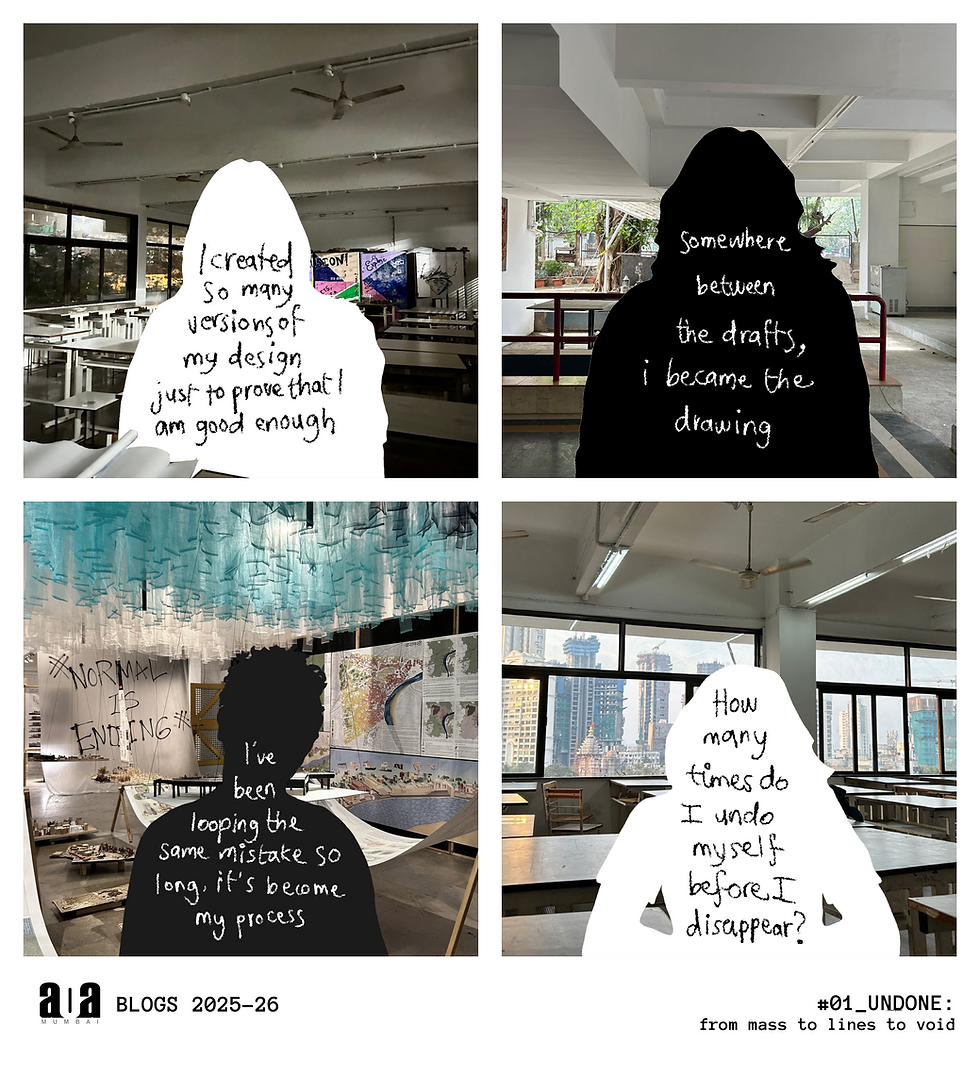ARCHITECTURE AND POLITICS
- Khushi Pednekar
- Feb 25, 2023
- 4 min read

Source-Author
While architecture is the art and science of built spaces, its profound influence lies in the experience of a place at any given moment in time. The identity of an environment exists as a perception of its users, and thus, architecture can also be defined as a social, political and ecological still (memory) of that time and idea in context. This dimension of profession has a potential which can be harnessed to alter the trends in society. Change in society is not necessarily a progressive positive one. Often the motive and outcomes of an idea contradict each other; while the intent is positive or merely necessary, its impact could lead to the birth of unprecedented issues. Housing is a political right of every human, but suitable housing in mass leads to homogenization, as it is historically evident (post war Industrialization). Throughout history, art movements have tried to tackle this particular issue, under the tag of the then existing political agendas. The Bauhaus art movement sought to bring back the ‘soul’ of art lost amidst mass production, whereas modernism in architecture tries to find similar minimalistic solutions justifying mass production. These trends highlight the need to approach the complexity of multiple interrelation spheres and transform this act of thoughtless production into meaningful spatial responses in reality.
A designer has the challenging responsibility to address the diverse users and disciplines in a singular response. The market, however, deals with the need of the hour by providing solutions which are generic, disregarding the users and their realities. At this point, the role of an architect in shaping the market can be questioned. What are his duties? What are the extents of his influence? An architect will inevitably have a political stance in the way his response shapes and affects the surroundings. This realization of responsibility becomes a key factor in defining the extent of the profession and in creating a symbolic effort, approached differently by each architect. Being political doesn’t necessarily mean pushing one’s political agenda, rather acquiesce to the state interests. Definition of politics has changed over the years, from putting forth concerns of state affairs to serving private corporate interests, and so did the politics associated with the profession of architecture.
The architect, thus, has the power to either continue with the monotony of a generic utility practice or create a critical creative response, being mindful of his impact on a diverse demographic. The act of negligence is often justified by the absence of authority over capital. Stakeholders and authoritarian bodies own and control the capital, whereas architects can control the flow of capital. They do so by focusing on the elements of design. One architect might dictate the materiality of a project using sustainable principles as a way to aid the environmental crisis, the other might focus on ways to increase the carpet area by literally cutting off corners and creating a compact curvilinear space to save on the cost per square foot. The possession of capital in itself cannot dictate its use, putting the architect into the position of authority and accountability.
A designer is not expected to do a dimension changing work, but simply take into account the multiple complexities their design will cater to, have an impact and from which it will be impacted. An innovative architect needs to ascertain the requirements of the client and reach beyond by considering the public interest at large. The mere consideration becomes a step towards creating a symbolic or a functionally positive impression on society. Stressing on the fact that an architect cannot alter the way a society functions is important, because it simply does not have such a stretch. However, what can be expected from an architect is certainly a morally correct, sensitive construct to sweep a variegated society; ultimately indirectly shaping the progression of society.
Art and architecture movements are a direct link between politics and the vision of an architect. These visions progressively become a lens through which society perceives its environment. In the present day scenario, Pragmaticism is being regarded as the new Avant garde. Parametric design involves variables that produce solutions based on relations of given input data. This data in the situations of its context create practical, hospitable and environmentally informed architecture, coming close to the regime of a sensitive design. Through the term ‘Parametricism’, Patrick Schumacher refers to the movement this mature form of design could bring about. The strength of parametricism lies in its ability to aid the designer by taking into consideration the vast amount of socio-ecological data and its optimal usage. However, quite contrary to its position as the claimed avant garde style of the 20th century architecture, parametricism attempts to disassociate itself from politics by claiming it to be non-political. It aims to deviate from any political agenda, apprehending to participate in social or political activism. Even though architecture is always a consequence of politics, parametricism doesn’t take a stand and validates corporate interests. Due to this reason, Parametricism failed to reach its full potential in developing into the architecture movement as was anticipated by its followers.
Politics is the outcome of organized functioning of a community. Architecture serves the community and thus cannot be exclusive of activism. The scale of social issues that can be tackled effectively by an architect is limited, but turning a blind eye towards them is not an option. Collective organization of politicians and business investors coordinate together, with the architect steering the project towards a primary objective with an inherent cause. The distinction between a ‘professional practice’ and an ‘architectural design project’ lies in the assertion of the point of view of an architect. The architect with his idea of built space solidifies the identity of a community and environment. The prospects to this are binary- creation of a built environment that itself addresses the state affairs. The objective is thus very clear: to have a voice and vision; to not be distinguished from your social and civic responsibilities, as a professional, activist and a citizen.
Written by- Chaitanyaa Agrawal and Prerna Suryawanshi

.png)







Comments